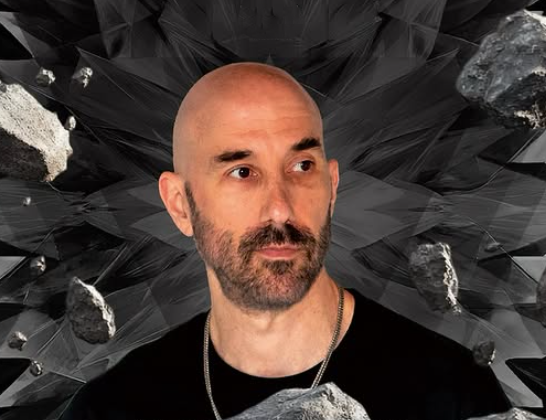TJR’s transformation from a budding golfer from Connecticut to a well-known electronic producer is an incredibly original story of artistic defiance and perseverance. Born Thomas Joseph Rozdilsky, he had the option of pursuing a traditional athletic career, but a life-altering experience with acid house music changed his course. He entered a developing DJ scene, which at the time was throbbing through underground venues rather than mainstream charts, by trading clubs for beats.

TJR quickly established a distinctive style by utilizing his interest in high-energy, rhythm-heavy genres. Melbourne Bounce was made more widely known by songs like “Ode to Oi,” and “What’s Up Suckaz” became a festival mainstay. However, the 2012 hit song “Don’t Stop the Party,” which he co-produced with Pitbull, was the one that gave him financial stability. He went from being a niche act to a sought-after collaborator after that single, which went platinum. Although precise numbers are still unknown, this song’s sync placements in arenas, sports ads, and international broadcasts have probably generated a consistent flow of royalties.
TJR – Bio, Career, and Earnings Overview
| Attribute | Detail |
|---|---|
| Full Name | Thomas Joseph Rozdilsky |
| Stage Name | TJR |
| Date of Birth | March 15, 1983 |
| Age | 42 (as of 2025) |
| Birthplace | Danbury, Connecticut, USA |
| Nationality | American |
| Profession | DJ, Music Producer, Remixer |
| Active Since | 2005 |
| Music Genres | Melbourne Bounce, Electro House, Moombahton, Dutch House |
| Associated Acts | Pitbull, Dillon Francis, Chris Lake |
| Notable Tracks | “Don’t Stop the Party” (w/ Pitbull), “Ode to Oi”, “What’s Up Suckaz” |
| Record Labels | Spinnin’ Records, Mad Decent, Boysnoize Records, Rising Music |
| YouTube Earnings Estimate | $1 (last 90 days), $1 (last 30 days), $0 (last 7 days) |
| Estimated Net Worth | Between $1,080 and $6,470 (based on limited public data) |
Online revenue trackers present a surprisingly low picture in spite of that success. According to Socialblade data, TJR’s YouTube channel made an estimated $1 during the previous ninety days. Even though this may seem absurdly low, it’s typical for artists who make more money from live performances, licensing, and backend royalties than from video content that contains advertisements. For him, YouTube is only a small portion of a much larger revenue landscape.
The sources of income for DJs have changed dramatically over the last ten years. Touring North America, Europe, and particularly Australia, where his music became very popular, has probably brought in a far bigger portion of TJR’s income. He was able to maintain his visibility and momentum by performing on stages alongside international headliners at events like Stereosonic and Electric Daisy Carnival. Many artists, including TJR, adjusted through virtual sets, exclusive releases, and Patreon-supported content, even though pandemic restrictions temporarily stopped such performances.
His choice to put his art before fame is one facet of his career that has remained noticeably subtle. TJR stuck to a sound that was frequently characterized as especially inventive, in contrast to many of his contemporaries who pursued brand endorsements or dabbled in pop-heavy partnerships. Despite being less commercially successful, this strategy has shown remarkable durability. His music is still featured in remix libraries, DJ sets, and carefully curated playlists, which is evidence of his craft-focused philosophy.
TJR has alluded to prioritizing creative freedom over high-profile deals in recent interviews. In a time when streaming algorithms frequently set trends, this viewpoint is surprisingly novel. TJR’s journey shows a consistent, grounded dedication to personal expression, which may not result in huge numbers on Forbes lists but adds to a richer, more genuine legacy than others who strive for chart hits.
The online income estimates, which range from slightly over $1,000 to less than $6,500, are probably far from comprehensive. Usually, licensing fees, royalties from international performance rights organizations, festival booking deposits, and production work for other artists are not included in these numbers. He might be in much better financial standing given his involvement in projects that continue to generate engagement across platforms.
TJR solidified his standing with colleagues in the industry by forming strategic alliances with reputable labels like Mad Decent and Spinnin’. He was a very effective go-to collaborator because of his ability to precisely remix, add off-kilter basslines, and infuse tracks with polished yet playful energy. Despite frequently being invisible to fans, these behind-the-scenes jobs typically generate more steady income than the erratic profits of viral celebrity.
In order to remain relevant, TJR has shifted its focus in recent years to studio production and digital content, adjusting to emerging technologies and streaming trends. He has created a more enduring relationship with a devoted following by incorporating fan-focused platforms and providing downloadable packs. He takes a targeted, grassroots, and genuine approach, which sets him apart from artists who follow trends on TikTok or other chart-driven platforms.
The music industry has been moving toward a more creator-friendly model during the last five years. Artists like TJR may profit from the growing popularity of fan-owned music models and the transparent royalty tracking made possible by blockchain technologies. For producers who have been involved behind the scenes for years, the future appears especially bright.
His career is based on sound rather than spectacle, which is further highlighted by the fact that his personal life is still largely private. He is known to live in California and spends a lot of time in the studio, where he coaches aspiring DJs, tinkers with synthesizers, and experiments with sound design. Despite lacking the flash of celebrity, this way of life seems to be very creatively satisfying and sustainable.
Even though TJR’s financial footprint isn’t glamorous, it has a distinct weight. It highlights the importance of craftsmanship, authenticity, and consistency—elements that are sometimes eclipsed by virality. His story is especially helpful for younger producers who want to establish a long-term career without sacrificing their artistic identity in a field that is quickly shifting toward creator equity.
